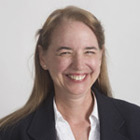Boston, MA
July 21-26, 2013
Conference Website
The Building Learning Communities Conference brings together a diverse ensemble of keynote speakers and attendees to forge new relationships and strengthen existing ties for more meaningful teaching and learning enhanced by technology. BLC provides participants with inspiration and practical skills, and expands professional networks with educators from around the world.
Thursday, July 25
 Models and Probes: Getting Ready for the Common Core
Models and Probes: Getting Ready for the Common Core
Carolyn Staudt
4:00pm-5:05pm
The Innovative Technology in Science Inquiry (ITSI) project prepares diverse students for careers in information technologies by engaging them in exciting, inquiry-based science projects that use computational models and real-time data acquisition. ITSI has produced dozens of activities in elementary, middle and high school science using a range of commercial sensors as well as open source or research-based models.
Teachers can customize ITSI science inquiry activities easily to fit their classrooms and engage their local communities using the web-based interface. All activities are embedded in software that allows students to read the activity, answer questions, make predictions and collect data, analyze results, run a computer-based model, take and annotate snapshots of that model, and save their work within one application. It also allows the collection of formative and summative assessment data, which is available to the teachers. This workshop will allow you to try out the activities and see how they would fit in your school. Project materials are free and available online.
Friday, July 26
Sensing Science: Temperature Readiness for K-2
Carolyn Staudt
11:45am-12:50pm
Children learn by exploring their world through everyday activities and developing intuitive understandings. Testing representations using data collection helps us learn about temperature preconceptions. Concepts involving temperature and heat are among the phenomena children experience most frequently, yet they are all but ignored in early elementary education because of their abstract and invisible nature. Sensing Science uses existing surface temperature sensors and infrared devices in conjunction with a computer, enabling K-2 students to interact with their assumptions, record and replay their actions and reflect on their archived data. Using sensors, models, drawings, and other representations make it possible for children to explore their world, investigating the widest possible range of scenarios throughout the classroom, on the playground and elsewhere. We closely observed students’ actions and actively elicited spontaneous ideas in order to test and revise assumptions about common preconceptions regarding temperature and heat. Based on these preconceptions we designed visualizations and explorations. As part of a National Science Foundation grant, initial design tests took place in Littleton Public Schools (MA) during the first year. The materials were tested with two classrooms in each grade K-2.
Being Smart with Graphs
Carolyn Staudt
1:10pm-2:35pm
SmartGraphs is a project that studies the educational value of digital objects embedded in graphs that “know” about themselves and that provide scaffolding to students to help them learn about graphs and the concepts conveyed in graphs.
Digital SmartGraphs can be authored or customized by teachers and accept inputs from students’ responses, sketches, functions, models, and probes. The software analyzes the graphs for the kinds of features that experts recognize and then engages students in conversations that instruct and assess student knowledge.
SmartGraphs is guided by collaboration between the Concord Consortium and the Pennsylvania State Department of Education Classrooms for the Future program, through which 145,000 laptop computers are deployed to serve 500,000 students. Other states, districts, or schools that are also interested in providing meaningful software to help students interpret visual graphical data from existing graphs or real time data collected with probes will thrill with this free Open Source software tool!